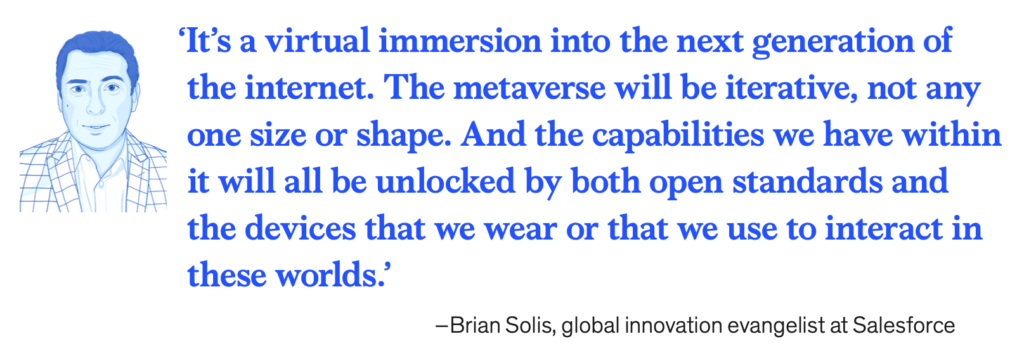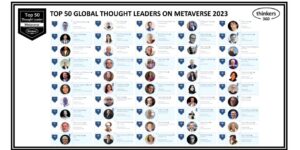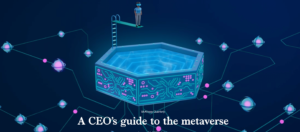
Even though the term is inextricably linked with web3, the popular virtual worlds often referenced today are closer to web2 in operation and business models than they are to a decentralized platform. Roblox, Fortnite, World of Warcraft, Meta (formerly Facebook) Horizon Worlds, Second Life, Decentraland, are all in their own way example of an evolving metaverse.
The original term was coined by Neal Stephenson in his 1992 science fiction novel, “Snow Crash.” In it, he envisioned a place where humans, as programmable avatars, interact with each other and software agents, in a 3D virtual space that uses the metaphor of the real world.
Since then, the idea of the metaverse has become synonymous with virtual worlds, virtual reality (VR), and immersive games.
To simplify its working premise, a metaverse can be thought of as an immersive social network that exists in a virtual world where users can participate through a virtual or augmented presence. It is described as the successor to a web1 and web2 desktop and mobile internet.
In a conversation with McKinsey for its new report, “Value Creation in the Metaverse” I shared thoughts on how the metaverse will be an iterative experience, a front-end to a web3 back-end.
The metaverse is a virtual immersion into the next generation web. The metaverse will be iterative, not any one size or shape. And the capabilities we have within it will be unlocked by both open standards and the devices that we wear/use to interact in these worlds.

Brian Solis | Author, Keynote Speaker, Futurist
Brian Solis is world-renowned digital analyst, anthropologist and futurist. He is also a sought-after keynote speaker and an 8x best-selling author. In his new book, Lifescale: How to live a more creative, productive and happy life, Brian tackles the struggles of living in a world rife with constant digital distractions. His previous books, X: The Experience When Business Meets Design and What’s the Future of Business explore the future of customer and user experience design and modernizing customer engagement in the four moments of truth.
Invite him to speak at your next event or bring him in to your organization to inspire colleagues, executives and boards of directors.





Leave a Reply